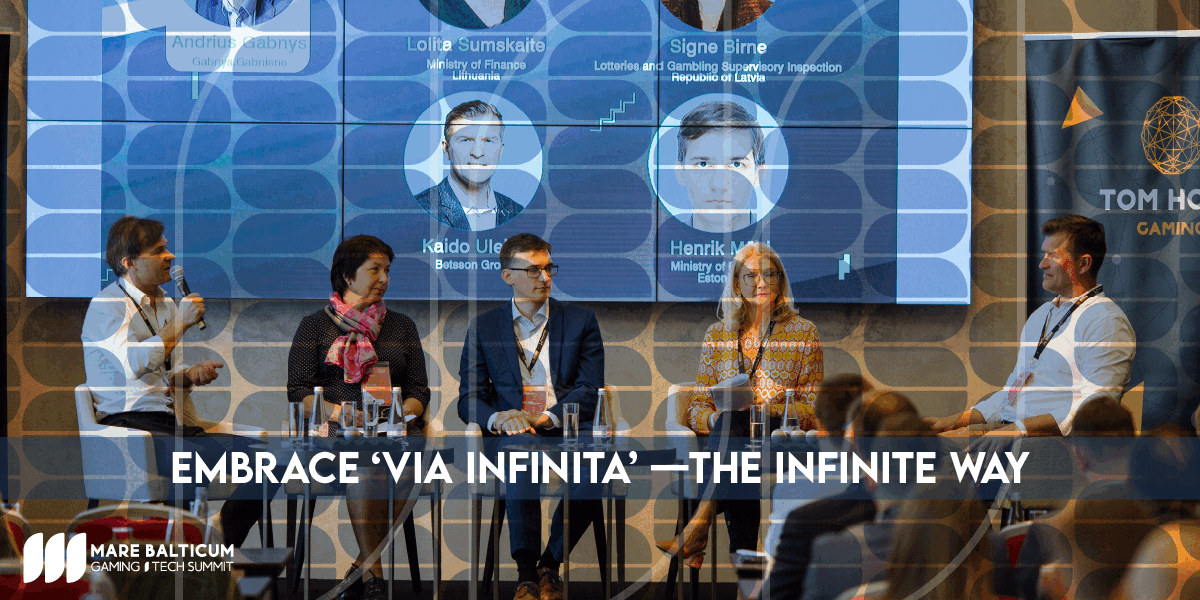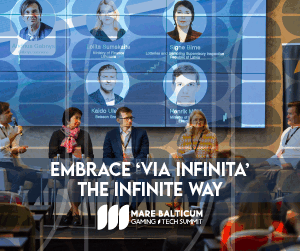Blockchain Press Releases
Containers as a Service Market to Reach $20.7 Billion, Globally, by 2032 at 25.3%% CAGR: Allied Market Research

The growth of the global containers as a service market is driven by increase in demand for flexible and dependable container service solutions, and rising benefits of cost effectiveness and increased productivity
PORTLAND, Ore., Aug. 2, 2023 /PRNewswire/ — Allied Market Research published a report, titled, “Containers as a Service Market, Service Type (Monitoring and Analytics, Security, Management and Orchestration, Storage and Networking, Training and Consulting, and Others), Deployment Model (Public Cloud, Private Cloud, and Hybrid Cloud), Enterprise Size (large Enterprises, and Small and Medium-Sized Enterprises) and Industry Vertical (BFSI, Manufacturing, IT and Telecom, Retail and Consumer Goods, Media, Entertainment and Gaming, Healthcare, Government and Public Sector, and Others): Global Opportunity Analysis and Industry Forecast, 2023-2032″. According to the report, the global containers as a service industry generated $2.2 billion in 2022, and is anticipated to generate $20.7 billion by 2032, witnessing a CAGR of 25.3% from 2023 to 2032.
Prime determinants of growth
The growing awareness of the benefits of cost-effectiveness and increased productivity, and the rise in the need for services from businesses to reduce shipping times as a result of hosted applications drives the demand for containers as a service device. However, the difficulty in achieving security and compliance is expected to hamper the market growth. On the contrary, the emergence in IoT applications is anticipated to provide lucrative development opportunities for the containers as a service market in the forthcoming years.
Download Sample Report: https://www.alliedmarketresearch.com/request-sample/145033
Report coverage & details:
|
Report Coverage |
Details |
|
Forecast Period |
2023–2032 |
|
Base Year |
2022 |
|
Market Size in 2022 |
$2.2 Billion |
|
Market Size in 2032 |
$20.7 Billion |
|
CAGR |
25.3 % |
|
No. of Pages in Report |
314 |
|
Segments covered |
Service Type, Deployment Model, Enterprise Size, Industry Vertical, and Region. |
|
Drivers |
Increase in demand for flexible and dependable container service solutions. Growth in the use of microservices. Cost-effectiveness and increased productivity. |
|
Opportunities |
Increase in adoption of containers as a service in small and medium-scale enterprises |
|
Restraints |
Heavy increase in container sprawl. Lack of enterprise DevOps culture. |
Covid-19 Scenario
- The pandemic necessitated a rapid shift to remote work and increased reliance on digital technologies. Organizations quickly recognized the need to modernize their IT infrastructure and embrace cloud-native approaches. CaaS emerged as a crucial enabler, allowing businesses to efficiently deploy and manage applications in a distributed environment. This accelerated digital transformation had spurred the demand for CaaS solutions.
- Overall, containerization and CaaS helped organizations optimize costs by improving resource utilization and reducing infrastructure overhead. This became particularly important as companies sought ways to optimize expenses during the economic downturn caused by the pandemic. Therefore, the COVID-19 pandemic had a positive impact on the containers as a service market.
Buy this Complete Report (314 Pages PDF with Insights, Charts, Tables, and Figures) at: https://www.alliedmarketresearch.com/containers-as-a-service-market/purchase-options
The monitoring and analytics segment to maintain its leadership status throughout the forecast period
Based on service type, the monitoring and analytics segment held the highest market share in 2022, accounting for nearly one-third of the global containers as a service market revenue. This is attributed to the fact that cloud-native monitoring solutions are gaining popularity in the containers as a service market. These solutions are specifically designed to monitor containerized and microservices-based applications. They provide granular visibility into container performance, application dependencies, and service-to-service communication within the containerized environment. However, the security segment is projected to manifest the highest CAGR of 29.0% from 2023 to 2032,and is estimated to maintain its leadership status throughout the forecast period. With the popularity of containerization, there has been a growing focus on securing container images. Security services are evolving to provide richer, more automated container image scanning capabilities. These services integrate with image registries, leverage vulnerability scanning tools, and use machine learning techniques to detect and remediate security issues in container images prior to deployment.
The public cloud segment to maintain its leadership status throughout the forecast period
Based on deployment mode, the public cloud segment held the highest market share in 2022, accounting for more than half of the global containers as a service market revenue, because public cloud providers offer scalable infrastructure resources, allowing organizations to dynamically scale their containerized applications based on demand. The ability to rapidly scale up or down resources is particularly valuable for applications with fluctuating workloads. However, the hybrid cloud segment is projected to manifest the highest CAGR of 28.4% from 2023 to 2032, as hybrid cloud service providers can develop comprehensive management solutions that allow organizations to efficiently orchestrate and monitor containerized applications across various public and private cloud environments. These tools can provide unified visibility, automation, and policy enforcement across hybrid cloud deployments.
North America to maintain its dominance by 2032
Based on region, North America held the highest market share in terms of revenue in 2022, accounting for nearly two-fifths of the global insurance chatbot market revenue, the expansion of the containers as a service market in North America is anticipated to be fueled by the integration of artificial intelligence (AI) and machine learning (ML) technologies with applications for container services, the demand for an automated business process to reduce manual errors, and enhanced IT systems to fulfill the wide range of customer requirements. However, the Asia-Pacific region is expected to witness the fastest CAGR of 28.5% from 2023 to 2032, and is likely to dominate the market during the forecast period, this is due to the growing start-up ecosystem and expansion of e-commerce and digital services are the two main drivers that are pushing the growth of the containers as a service market in the Asia-Pacific region.
Enquiry Before Buying: https://www.alliedmarketresearch.com/purchase-enquiry/145033
Leading Market Players: –
- Google LLC
- Amazon Web Services, Inc.
- Cisco Systems, Inc.
- IBM
- Microsoft
- Huawei Technologies Co., Ltd.
- VMware, Inc.
- Docker Inc.
- Oracle
- Hewlett Packard Enterprise Development LP
The report provides a detailed analysis of these key players of the global containers as a service market. These players have adopted different strategies such as partnership, product launch, and expansion to increase their market share and maintain dominant shares in different regions. The report is valuable in highlighting business performance, operating segments, product portfolio, and strategic moves of market players to showcase the competitive scenario.
Trending Reports in ICT & Media Industry:
FAST (Free Ad-Supported TV) Channels Market Expected to Reach $28 Billion by 2032
Virtual Customer Premises Equipment Market Expected to Reach $92.9 Billion by 2032
RAN Intelligent Controller Market Expected to Reach $14 Billion by 2032
Email Encryption Software Market Expected to Reach $55.4 Billion by 2032
AVENUE- A Subscription-Based Library (Premium on-demand, subscription-based pricing model):
AMR introduces its online premium subscription-based library Avenue, designed specifically to offer cost-effective, one-stop solution for enterprises, investors, and universities. With Avenue, subscribers can avail an entire repository of reports on more than 2,000 niche industries and more than 12,000 company profiles. Moreover, users can get an online access to quantitative and qualitative data in PDF and Excel formats along with analyst support, customization, and updated versions of reports.
Get an access to the library of reports at any time from any device and anywhere. For more details, follow the link: https://www.alliedmarketresearch.com/library-access
About Us
Allied Market Research (AMR) is a full-service market research and business-consulting wing of Allied Analytics LLP based in Portland, Oregon. Allied Market Research provides global enterprises as well as medium and small businesses with unmatched quality of “Market Research Reports” and “Business Intelligence Solutions.” AMR has a targeted view to provide business insights and consulting to assist its clients to make strategic business decisions and achieve sustainable growth in their respective market domain.
We are in professional corporate relations with various companies and this helps us in digging out market data that helps us generate accurate research data tables and confirms utmost accuracy in our market forecasting. Allied Market Research CEO Pawan Kumar is instrumental in inspiring and encouraging everyone associated with the company to maintain high quality of data and help clients in every way possible to achieve success. Each and every data presented in the reports published by us is extracted through primary interviews with top officials from leading companies of domain concerned. Our secondary data procurement methodology includes deep online and offline research and discussion with knowledgeable professionals and analysts in the industry.
Contact:
United States
1209 Orange Street,
Corporation Trust Center,
Wilmington, New Castle,
Delaware 19801 USA.
Int’l: +1-503-894-6022
Toll Free: +1-800-792-5285
Fax: +1-800-792-5285
[email protected]
Logo: https://mma.prnewswire.com/media/636519/Allied_Market_Research_Logo.jpg
![]() View original content:https://www.prnewswire.co.uk/news-releases/containers-as-a-service-market-to-reach-20-7-billion-globally-by-2032-at-25-3-cagr-allied-market-research-301891505.html
View original content:https://www.prnewswire.co.uk/news-releases/containers-as-a-service-market-to-reach-20-7-billion-globally-by-2032-at-25-3-cagr-allied-market-research-301891505.html

Blockchain Press Releases
HTX Ventures Invests in ChainML, Developer of Theoriq AI Agent Protocol, to Support Decentralized AI Agent Protocol Development

SINGAPORE, May 14, 2024 /PRNewswire/ — With a commitment to broadening the reach and usability of blockchain technologies, HTX Ventures, the global investment arm of the cryptocurrency exchange HTX, has announced a strategic investment in ChainML, a Silicon Valley-based AI and ML development and research lab that recently unveiled its groundbreaking Agentic Base Layer, Theoriq.
ChainML recently raised $6.2 million during its Super Seed funding round, led by Hack VC. The funding underscores the confidence and excitement surrounding ChainML’s vision to seamlessly integrate AI into the decentralized world of blockchain and revolutionize the AI landscape. By providing a platform like Theoriq for limitless AI innovation, built on the principles of composability, extensibility, and community-driven governance, ChainML promises to offer an unmatched ecosystem for deploying sophisticated AI agents that leverage Web3 technology to ensure transparency, security, and efficiency.
Theoriq’s axioms, based on principles of social evolution and implemented with blockchain, lay the foundation for continuously improving, community-governed AI systems.
Key features include:
- Agentic Primities: Fundamental elements in the ecosystem that facilitate autonomous interaction, embodying roles, behaviors, and functions that contribute directly to an agent’s capacity to operate independently within its environment.
- Modular Composability: Allowing developers to craft tailored AI solutions that can combine and be recombined to create sophisticated systems to evolve and adapt over time.
- Community Permissioned Governance: Ensuring that decision-making authority is vested in a diverse group of community stakeholders who actively contribute to and provide feedback on the quality of AI agents, ensuring that the technology aligns with collective goals and values.
Edward, Managing Partner at HTX Ventures, said “ChainML’s Theoriq is an innovative platform that provides an actionable solution for AI agents to interact interchangeably, packed with more autonomy and capability. The platform paves the way for the future of AI, we are excited to be part of this journey.”
“Today marks a pivotal moment for ChainML and for the broader AI and Web3 communities,” said Ron Bodkin, Co-founder & CEO of ChainML. “With Theoriq, we’re not just launching a product—we’re spearheading a movement towards a transparent, community-governed AI ecosystem. HTX Ventures’ support will be instrumental as we unlock new potentials for AI integration within the decentralized space.”
HTX Ventures is excited to support innovative projects like ChainML, which combine AI development with blockchain to explore new synergies. Users can interact with the Theoriq testnet this summer by joining the waitlist.
Contact Details
Michael Wang
[email protected]
Company Website
https://www.htx.com/en-us/ventures

Photo – https://mma.prnewswire.com/media/2411969/image_838145_9931602.jpg
Logo – https://mma.prnewswire.com/media/2391903/image_ID__Logo.jpg
![]() View original content:https://www.prnewswire.co.uk/news-releases/htx-ventures-invests-in-chainml-developer-of-theoriq-ai-agent-protocol-to-support-decentralized-ai-agent-protocol-development-302144332.html
View original content:https://www.prnewswire.co.uk/news-releases/htx-ventures-invests-in-chainml-developer-of-theoriq-ai-agent-protocol-to-support-decentralized-ai-agent-protocol-development-302144332.html

Blockchain Press Releases
KuCoin Research Report Reveals: $1 Billion in Financing and Rising Stablecoin Issuance Amid Market Fluctuations
VICTORIA, Seychelles, May 14, 2024 /PRNewswire/ — KuCoin’s latest monthly research report observed the cryptocurrency market’s resilience and adaptability amidst shifting dynamics. Although the market sentiment was moderated, the stablecoin sector demonstrated robust growth. The issuance of major stablecoins like USDT and USDC increased by $6 billion and $868 million respectively, signaling steady capital inflows and sustained investor interest in the crypto sector, with the total financing scale reaching 1.024 billion, maintaining a relatively high level.
Despite some adjustments, the Assets Under Management (AUM) for the US Bitcoin spot ETFS and the open interest in BTC futures and options exhibited stability, contributing to a balanced fear and greed index throughout the month. This reflects a matured investor response to evolving economic indicators and central bank policies.
The report also noted a positive trend in Ethereum Layer2 solutions, where despite a challenging broader market environment, there was slight growth in Total Value Locked (TVL) measured in Ethereum. This underscores the ongoing innovation and resilience within key blockchain ecosystems.
KuCoin remains committed to providing the crypto community with comprehensive insights and analysis, helping investors navigate the complexities of the cryptocurrency market with confidence. The full report can be accessed here for detailed insights and further information.
About KuCoin Research
KuCoin Research is a leading provider of research and analysis in the cryptocurrency industry. With a team of experienced analysts and researchers, KuCoin Research aims to deliver high-quality insights and reports to empower investors and industry professionals.
Logo – https://mma.prnewswire.com/media/2356857/KuCoin_Horizontal_Green_LOGO_Logo.jpg
![]() View original content:https://www.prnewswire.co.uk/news-releases/kucoin-research-report-reveals-1-billion-in-financing-and-rising-stablecoin-issuance-amid-market-fluctuations-302144157.html
View original content:https://www.prnewswire.co.uk/news-releases/kucoin-research-report-reveals-1-billion-in-financing-and-rising-stablecoin-issuance-amid-market-fluctuations-302144157.html

Blockchain
North Korean hackers target crypto firms with ‘Durian’ malware, Kaspersky confirms


North Korean hackers have once again targeted cryptocurrency firms, this time using a sophisticated malware known as Durian, according to cybersecurity experts at Kaspersky. This latest revelation underscores the ongoing threat posed by cybercriminals to the cryptocurrency industry and highlights the need for robust security measures to protect against such attacks.
Durian, named after the pungent tropical fruit, is a highly advanced malware strain believed to have been developed by the Lazarus Group, a notorious hacking collective with ties to North Korea. The malware is designed to infiltrate the networks of cryptocurrency exchanges and steal sensitive information, including user credentials, private keys, and other valuable data.
Kaspersky researchers have identified multiple instances of Durian being deployed in targeted attacks against cryptocurrency firms in recent months. The malware is typically spread via phishing emails containing malicious attachments or links to fake websites designed to trick victims into downloading and installing the malware on their systems.
Once installed, Durian operates covertly, using a variety of techniques to evade detection and maintain persistence within the victim’s network. It can intercept and exfiltrate sensitive data, log keystrokes, and even take screenshots of the victim’s desktop, allowing hackers to gain unauthorized access to cryptocurrency wallets and other valuable assets.
The use of Durian by North Korean hackers represents a significant escalation in cyber threats against the cryptocurrency industry. The Lazarus Group, believed to be behind the malware, has a long history of targeting cryptocurrency exchanges and financial institutions with sophisticated cyberattacks aimed at stealing funds and sensitive information.
To mitigate the risk of falling victim to such attacks, cryptocurrency firms are advised to implement robust cybersecurity measures, including multi-factor authentication, encryption, network segmentation, and regular security audits. Additionally, users should exercise caution when opening email attachments or clicking on links, especially if they appear suspicious or unsolicited.
By remaining vigilant and implementing proactive security measures, cryptocurrency firms can better protect themselves and their customers against the growing threat posed by cybercriminals and state-sponsored hackers.
Source: crypto.news
The post North Korean hackers target crypto firms with ‘Durian’ malware, Kaspersky confirms appeared first on HIPTHER Alerts.
-

 Blockchain5 days ago
Blockchain5 days agoBlockchain adoption won’t threaten ‘postman’ Swift, say experts
-

 Blockchain Press Releases7 days ago
Blockchain Press Releases7 days agoSecure, Compliant but Flexible: FinchTrade Elevates Crypto Custody Offering with Fireblocks
-

 Blockchain7 days ago
Blockchain7 days agoEthereum Developers Target Ease of Crypto Wallets With ‘EIP-3074’
-

 Blockchain Press Releases5 days ago
Blockchain Press Releases5 days agoKorea Blockchain Week 2024 Announces Esteemed Headline Speakers, Claiming its Crown as the World’s Pre-eminent Web3 Conference
-

 Blockchain Press Releases5 days ago
Blockchain Press Releases5 days agoWSPN Empowers Digital Transactions by Teaming Up with 12 New Exchanges for Enhanced Accessibility
-

 Blockchain5 days ago
Blockchain5 days agoAlpha Sigma Capital Research Releases April Report on ASC AI Index
-

 Blockchain5 days ago
Blockchain5 days agoGhana’s crypto stamps honor king’s Silver Jubilee
-

 Blockchain5 days ago
Blockchain5 days agoBlockchain education initiatives take off amid crypto bull market






























